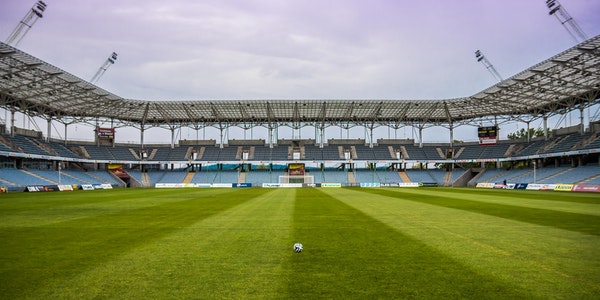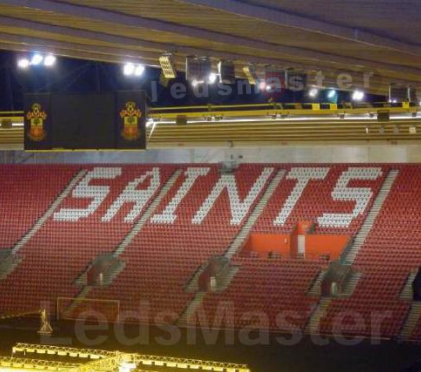(3) Automated Lighting Controls: Smart stadium systems can automate lighting controls based on preset schedules, occupancy sensors, or environmental conditions. LED lighting can adjust brightness levels and color temperatures dynamically to optimize energy efficiency and meet the specific requirements of different events or activities.
(4) Dynamic Lighting Effects: LED lighting systems offer the flexibility to create dynamic lighting effects for special events, entertainment, and fan engagement. Smart stadium systems can synchronize LED lighting with music, video displays, and crowd interactions to enhance the atmosphere and create immersive experiences for spectators.
(5) Data Analytics: LED lighting fixtures equipped with sensors and advanced analytics capabilities can collect data on crowd movements, occupancy patterns, and environmental conditions within the stadium. This data can be used to optimize lighting performance, enhance operational efficiency, and improve the overall fan experience.
(6) Integration with Building Management Systems: LED lighting systems can integrate with building management systems (BMS) to coordinate lighting operations with other building systems, such as heating, ventilation, and air conditioning (HVAC). This integration ensures seamless operation and energy optimization across all stadium facilities.
(7) Remote Monitoring and Maintenance: Smart stadium systems enable remote monitoring and diagnostics of LED lighting fixtures, allowing stadium operators to identify and address maintenance issues proactively. This reduces downtime, improves reliability, and extends the lifespan of LED lighting installations.
Overall, integration with smart stadium systems enhances the functionality, efficiency, and flexibility of LED lighting in sports venues, enabling personalized experiences, energy savings, and streamlined operations. This integration contributes to the evolution of stadiums into intelligent, connected environments that prioritize fan engagement, sustainability, and operational excellence.
C. Expansion to smaller venues and community sports facilities
Expanding LED lighting technology to smaller venues and community sports facilities offers numerous benefits, aligning with broader trends in sustainability, cost-efficiency, and improved lighting quality. Here are several reasons why LED lighting expansion to smaller venues and community sports facilities is advantageous:
- Energy Efficiency: LED lighting is inherently more energy-efficient than traditional lighting technologies, offering significant cost savings on electricity bills. For smaller venues and community sports facilities with limited budgets, the reduced energy consumption translates to long-term financial benefits and sustainability.
- Lower Operating Costs: In addition to energy savings, LED lighting requires less frequent maintenance and replacement compared to traditional lighting systems. This results in lower operating costs over time, as facility managers spend less on maintenance labor and lamp replacements.
- Improved Visibility and Safety: LED lighting provides superior visibility on the playing field, enhancing safety for athletes and spectators. In community sports facilities, where participants may range from amateurs to professionals, ensuring adequate lighting quality is essential for preventing injuries and creating a positive sports experience.
- Customizable Lighting Solutions: LED technology offers customizable lighting solutions tailored to the specific needs of smaller venues and community sports facilities. Whether it’s adjusting lighting levels for different sports activities or incorporating dynamic lighting effects for special events, LED systems can be tailored to enhance the overall user experience.

- Flexibility for Multi-Use Spaces: Many smaller venues and community sports facilities serve as multi-use spaces for various sports, events, and recreational activities. LED lighting’s versatility allows for quick adjustments in lighting levels, color temperatures, and beam angles to accommodate different activities and user preferences.
- Enhanced Community Engagement: Upgrading lighting infrastructure to LED technology demonstrates a commitment to sustainability and community well-being. It enhances the overall aesthetics of sports facilities, contributing to a positive community image and attracting more participants, spectators, and sponsors.
- Compliance with Regulations: LED lighting installations can help smaller venues and community sports facilities meet regulatory requirements and standards for sports lighting. Compliance with lighting standards ensures the safety and fairness of sports competitions while minimizing potential liabilities.
Overall, expanding LED lighting technology to smaller venues and community sports facilities brings numerous benefits, including energy efficiency, cost savings, improved visibility and safety, customizable lighting solutions, flexibility for multi-use spaces, enhanced community engagement, and compliance with regulations. As LED technology continues to evolve and become more accessible, its adoption in smaller sports facilities will likely become increasingly widespread, contributing to a more sustainable and enjoyable sports environment for all.
VI. Conclusion
A. Recap of the benefits of LED lighting revolutionizing sports viewing experiences
LED lighting revolutionizes sports viewing experiences by offering a multitude of benefits for both players and spectators. Here’s a recap of these benefits:
- Enhanced Visibility: LED lighting provides superior brightness, clarity, and uniformity, ensuring optimal visibility on the playing field or court. This enhances the ability of players to track the ball and make split-second decisions, while also improving the viewing experience for spectators.
- Improved Color Rendering: LED lighting offers high-quality color rendering, allowing spectators to see the true colors of team uniforms, equipment, and the playing surface. This enhances the overall visual experience and brings games to life with vibrant, true-to-life colors.
- Reduced Glare and Flicker: LED lighting minimizes glare and flicker, creating a comfortable viewing environment for players and spectators alike. This reduces eye strain and fatigue, allowing fans to enjoy the game for longer periods without discomfort.
- Dynamic Lighting Effects: LED technology enables customizable lighting effects for special events, entertainment, and fan engagement. From dynamic color-changing displays to synchronized light shows, LED lighting adds excitement and energy to the stadium atmosphere.

- Energy Efficiency: LED lighting is highly energy-efficient, consuming less electricity than traditional lighting systems. This leads to cost savings for sports venues while also reducing environmental impact and promoting sustainability.
- Longevity and Low Maintenance: LED fixtures have longer lifespans and lower maintenance requirements compared to traditional lighting sources. This reduces the need for frequent lamp replacements and maintenance activities, saving time and money for sports facilities.
- Smart Control Options: LED lighting systems can be integrated with smart controls and IoT platforms, enabling advanced functionality such as automated scheduling, remote monitoring, and adaptive lighting strategies. This enhances operational efficiency and flexibility for sports venue management.
Overall, the LED lighting revolution in sports venues transforms the viewing experience, offering unparalleled visibility, color quality, and energy efficiency while also enabling dynamic lighting effects and smart control options. These benefits contribute to a more engaging, immersive, and sustainable sports environment for players and fans alike.
B. Encouragement for more stadiums to embrace this technology
Encouraging more stadiums to embrace LED lighting technology is crucial for advancing the sports industry and enhancing the overall fan experience. Here are some compelling reasons to promote the adoption of LED lighting:
- Improved Fan Experience: LED lighting enhances the viewing experience for fans by providing superior visibility, vibrant colors, and dynamic lighting effects. By creating an immersive and engaging atmosphere, LED lighting elevates the excitement and enjoyment of sporting events.
- Enhanced Player Performance: LED lighting ensures optimal visibility on the playing field, allowing athletes to perform at their best. By reducing glare, flicker, and shadows, LED lighting helps players track the ball more accurately and make precise movements, enhancing the quality of gameplay.
- Energy Efficiency and Sustainability: LED lighting is highly energy-efficient, consuming less electricity and reducing carbon emissions compared to traditional lighting systems. By promoting the adoption of LED technology, stadiums can demonstrate their commitment to sustainability and environmental stewardship.
- Cost Savings: LED lighting offers long-term cost savings for stadiums through reduced energy consumption, lower maintenance costs, and longer fixture lifespans. By investing in LED technology, stadiums can achieve significant financial benefits while also improving lighting quality.
- Innovation and Modernization: Embracing LED lighting technology demonstrates a commitment to innovation and modernization in the sports industry. By staying at the forefront of technological advancements, stadiums can enhance their reputation as premier venues and attract more fans and sponsors.
- Regulatory Compliance and Safety: LED lighting installations can help stadiums meet regulatory requirements and safety standards for sports lighting. Compliance with lighting standards ensures the safety and fairness of sports competitions while minimizing potential liabilities.
- Community Engagement: Upgrading to LED lighting technology can enhance community engagement and support for stadiums. By providing an enhanced fan experience and promoting sustainability, stadiums can strengthen their ties with the local community and attract a wider audience.
Overall, promoting the adoption of LED lighting technology in stadiums offers numerous benefits, including improved fan experience, enhanced player performance, energy efficiency, cost savings, innovation, regulatory compliance, and community engagement. By encouraging more stadiums to embrace this technology, we can create a brighter, more sustainable future for sports venues worldwide.
C. Final thoughts on the future of LED lighting in sports arenas
In conclusion, the future of LED lighting in sports arenas is bright and promising. LED technology continues to revolutionize the sports industry by offering unparalleled benefits for players, spectators, and venue operators alike. As we look ahead, here are some key points to consider:
- Continued Innovation: LED lighting technology will continue to evolve, driven by ongoing advancements in efficiency, performance, and functionality. Innovations such as smart controls, customizable lighting effects, and human-centric lighting will further enhance the sports viewing experience.
- Expanded Adoption: We can expect to see increased adoption of LED lighting in sports arenas of all sizes, including smaller venues and community facilities. As LED technology becomes more accessible and cost-effective, more stadiums will recognize the value of upgrading their lighting systems.
- Sustainability Focus: Sustainability will remain a key focus for sports venues, driving the transition to energy-efficient LED lighting solutions. LED technology aligns with sustainability goals by reducing energy consumption, minimizing maintenance requirements, and promoting environmental stewardship.
- Enhanced Fan Engagement: LED lighting will play a pivotal role in enhancing fan engagement and creating memorable experiences at sporting events. Dynamic lighting effects, synchronized displays, and interactive features will captivate audiences and contribute to the overall excitement of game days.
- Regulatory Compliance: Compliance with lighting standards and regulations will continue to shape the design and implementation of LED lighting in sports arenas. Stadium operators will prioritize safety, fairness, and environmental responsibility in their lighting installations.
- Global Impact: LED lighting advancements will have a global impact, transforming sports venues around the world. Whether it’s iconic stadiums hosting major sporting events or local community facilities, LED technology will elevate the sports viewing experience for audiences everywhere.
Overall, LED lighting represents the future of sports arena illumination, offering a winning combination of performance, efficiency, and versatility. As stadiums embrace this technology, we can look forward to a brighter, more immersive, and more sustainable future for sports entertainment.








